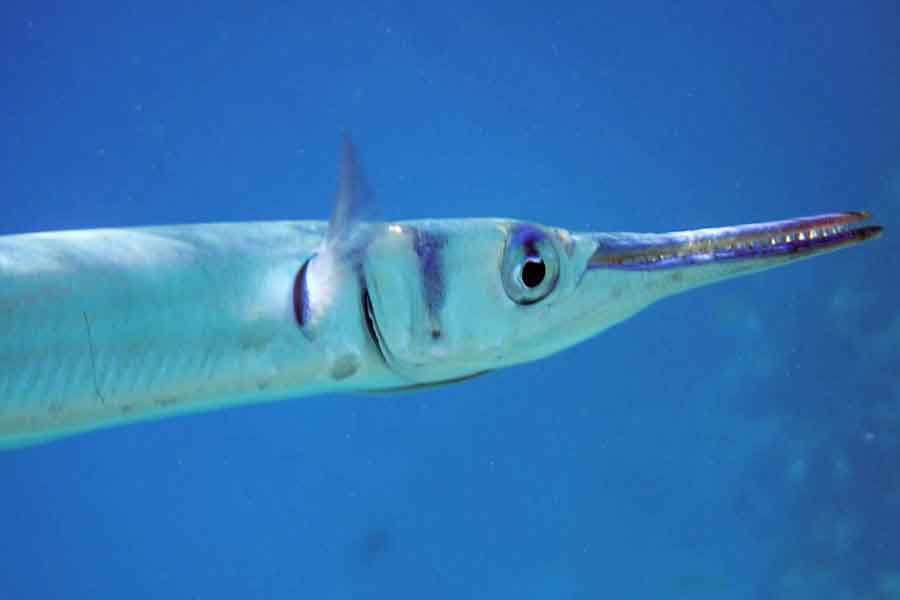
Needlefish are directly related to the seahorse family. The similarities between these animals are so striking that needlefish appear to be seahorses that have been stretched by their nose and tail. However, nature made them just the opposite. Seahorses are a branching offshoot in the needlefish family tree.
With a minimum length of 2.5 cm and a maximum of 30 cm, these small animals are absolutely astonishing. They are possibly one of the slowest fish in the ocean, moving by small undulations of their pectoral fins that can vibrate up to 35 times per second. Therefore, their prey consists of small and very slow animals. In order to capture them, needlefish replace the speed of an attack with a great suction power of millimeter-precise accuracy. A juvenile needlefish dedicates 10 hours a day to feeding and during this period can ingest around 3,600 microscopic shrimp larvae.
But undoubtedly, the most surprising aspect of these fish is related to their reproduction. The female attaches the eggs to a brood patch located on the male’s abdomen. In this way, the eggs travel attached to the father for the next ten days (photo). At the end of this period, the eggs hatch, releasing tiny needlefish replicas of their parents, measuring only 15 millimeters. Upon birth, the offspring must quickly escape and hide among the algae on the seabed to avoid being eaten by their father, who does not recognize them.
If they manage to survive hatching, they will undergo an equally astonishing development: in just two months, they will reach 5 cm in length. They will reach sexual maturity at three months, and their short lifespan is estimated to end in two or three years.
Needlefish and seahorses often symbolize marital fidelity for human beings. It is truly unknown where this idea comes from, as the female only approaches the male to transfer the eggs in a couple of «nuptial embraces.» This interaction lasts only 30 seconds, after which the female disregards her offspring and the father of her children to continue feeding until the time comes to produce another brood with any other male, who will take care of their new offspring.
«One cannot defend what one does not love, and one cannot love what one does not know.»

